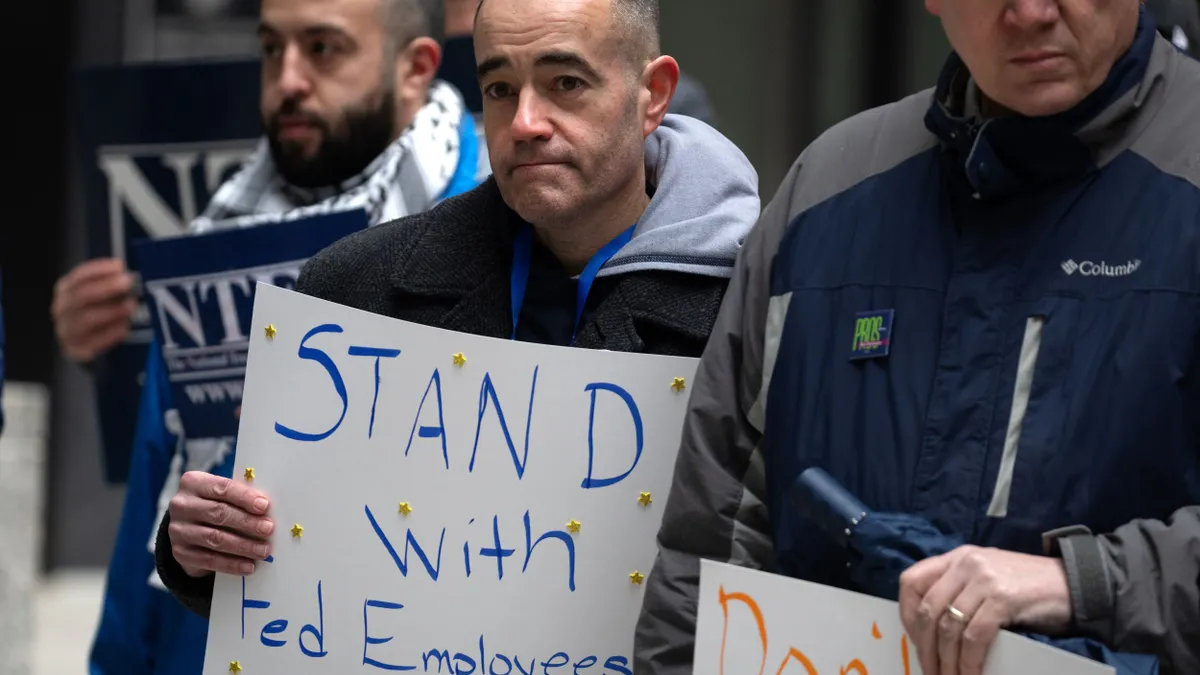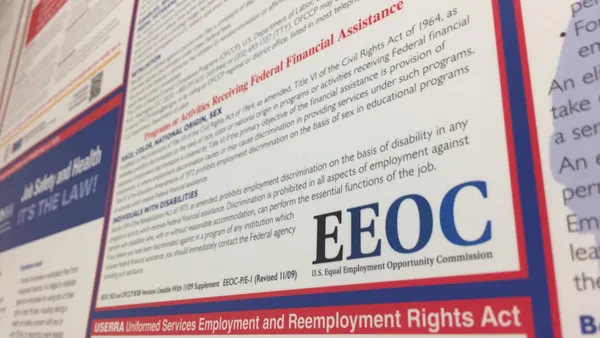LAS VEGAS — Workplace harassment discussions often focus on clear-cut incidents, but Duane Morris partner Jonathan Segal shifted that lens during a Monday session at the Society for Human Resource Management's annual conference.
It's important to keep that wider view, he said, because real-life workplaces present a lot of situations that fall under "gray areas."
"I don't think enough attention is paid to the middle," Segal said, referring to situations in between clear-cut instances of what is decidedly okay or not okay. "There are a number of areas in HR that we need to think about giving guidance to navigate the gray."
Take dating for example: A company's stance may vary when it comes to allowing employees to ask each other out on a date. It's one thing if Employee A approaches Employee B for a dinner plan, "no pressure," the latter declines and both move on. Similarly, if Employee B accepts and both later enter a healthy relationship, that might be okay in the eyes of most professionals, Segal said.
Of course, neither is likely to occur in real-life office romance, Segal said; "No pressure is often a nice way of saying there's some pressure." Things get particularly messy when Employee B is a direct report of Employee A. Rejecting the advance often carries the risk of retaliation, Segal said, yet a more indirect response, e.g. "I'm busy," may not have the intended effect.
Segal said he's come around to the idea of a reporting component requirement for employees as a solution to office dating. That might read something like, "you must inform HR if a relationship is developing," said Segal, who noted this approach may make more sense than an outright ban on behaviors that often occur in spite of such policies.
"Rather than pretending it doesn't exist, you bring it to the fore so that you can let people know their rights … and have a conversation with the person with power," Segal said.
Where 'zero tolerance' breaks down
It's standard practice for employers to adopt policies that claim the company has zero tolerance for harassment, but such policies have been scrutinized by leaders, including former U.S. Equal Employment Opportunity Commission member Chai Feldblum. Segal called these statements "problematic."
"The result may be that those who suffer from bad behavior suffer in silence," he said. Instead, Segal recommended including a statement of intentionality in order to back up a claim of zero tolerance. "Our response will be prompt and proportionate in order to punish the wrong and prevent future harm," Segal gave as an example.
Definitions are also important. If an employer wants to frame policies around "intimate conduct," for example, policies should delineate this means sexual and/or romantic conduct, Segal said.
Not all harassment is sexual harassment, and these other forms can also be difficult to navigate. Comments about someone's hairstyle or outfit may be innocuous but may also cause discomfort. If an employee unintentionally causes another discomfort, Segal said they should be trained to apologize for the behavior and state they won't repeat the mistake. Context, such as where the person said the remark, their word choice and their audience, also matters.
"We have to make sure we have civility, not sterility," he said. "If people have signals for navigating the gray, it becomes easier."
When conduct doesn't fit the mold
Leaders can play a big role in mitigating scenarios that don't rise to the level of a write-up. The EEOC has observed many incidents of gender stereotyping which are nonetheless problematic, Segal said, because they're contrary to a respectful culture and can be cited as evidence of bias in a disparate treatment claim. Ideally, when faced with such a situation, a manager should directly address the harasser in the moment: "Stop. Not okay. We'll talk later," Segal said.
"As a bystander, if you don't speak up in the moment, people may not think you have a problem or may feel that you condone it," he added, noting that there is "no such thing as a passive bystander if someone is a leader."
What's more, not all incidents involve protected classes of employees, Segal said, but that shouldn't matter. "If it's bad behavior we should be able to call it bad behavior without linking it to someone's EEO group."
What a manager needs to say
The response to an employee who brings forth a complaint of harassment can be absolutely critical to the events that follow, Segal said, and managers should be aware that they must report complaints they receive, regardless of whether they fall under a policy, legal or ethical bucket.
Segal said an important first step for managers is thanking those who bring forward complaints and acknowledging the seriousness of their concerns. From there, the manager should also help make a determination of how the concern will be taken to HR, presenting multiple options. "Change the conversation from whether to go to HR to how to go to HR," Segal said.
Finally, the manager should provide reassurance that the employee will not face retaliation for their decision. And if one of the parties asks what they should say to other individuals involved when they see them, Segal suggests managers respond with, "good morning."
Avoidance, he added, is not an unfounded concern. Segal said he's aware of incidents in which male executives have stated an intent to avoid women whom they think will accuse them of sexual harassment. "That's called discrimination," he said. HR can raise this issue in training specifically and hold leaders accountable in addressing it.




















